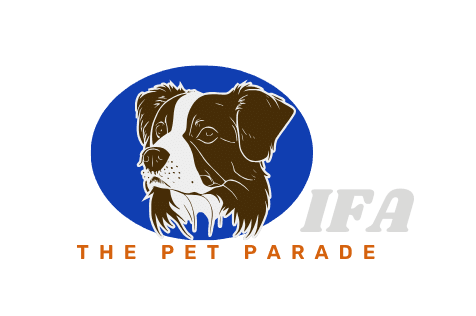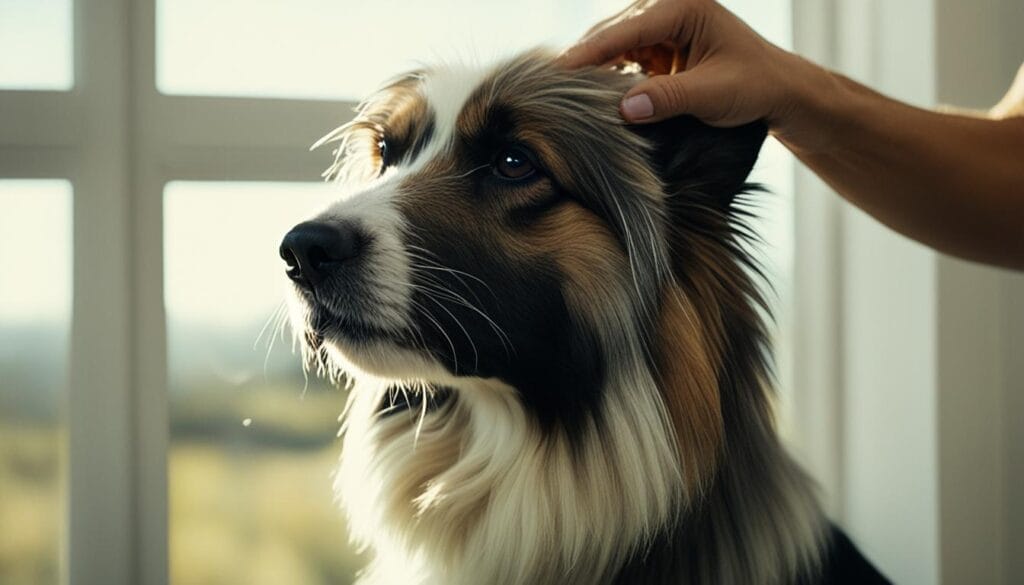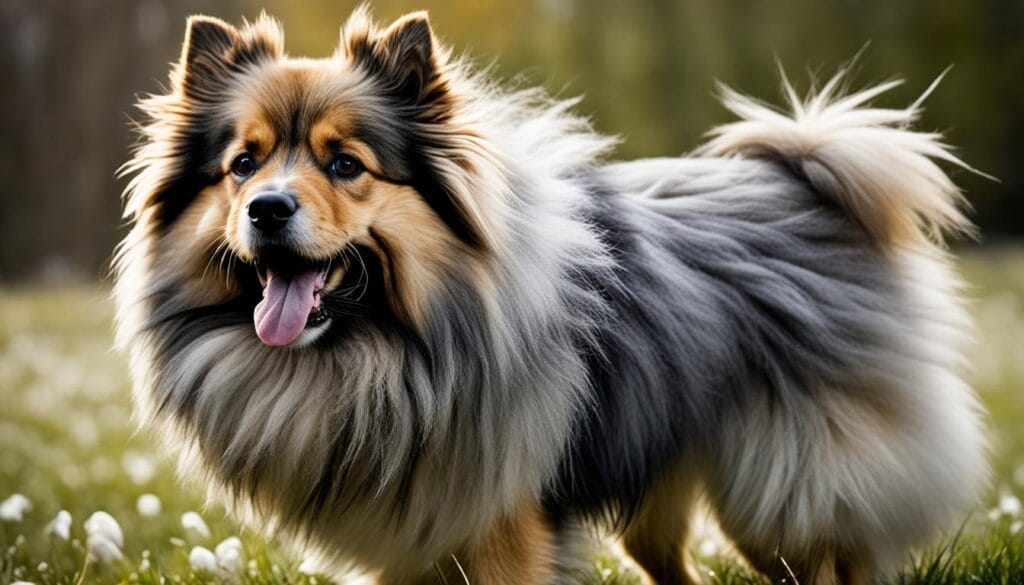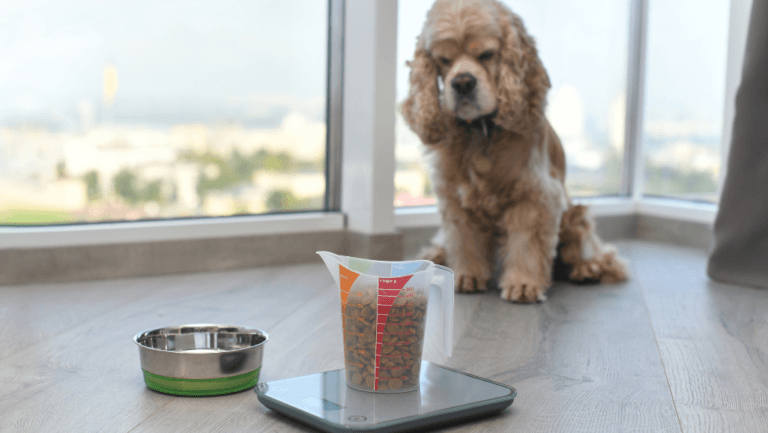As dog owners, we want our furry friends to be comfortable and healthy year-round. One important aspect of their well-being is taking care of their coat, especially during seasonal changes. Just like humans, dogs experience changes in their hair growth and shedding patterns throughout the year. Understanding these patterns and implementing proper grooming routines can help keep your canine companion happy and their coat in top condition.
Key Takeaways:
- Caring for Your Dog’s canine seasonal coat change.
- Properly caring for your dog’s coat during seasonal changes is crucial for their comfort and health.
- Different dog breeds have varying shedding patterns, with some shedding seasonally and others shedding year-round.
- Regular brushing and grooming can help manage shedding and keep your dog’s coat healthy.
- Excessive shedding may indicate underlying health issues, and it’s important to consult with a veterinarian.
- Double-coated breeds require special attention during coat blow seasons, and shaving should be avoided.
Understanding Dog Shedding Patterns
Dog shedding is a natural process that varies across different breeds and coat types. By understanding your dog’s shedding patterns, you can better manage this aspect of their grooming routine. Let’s explore the factors that influence dog shedding and how you can adapt your grooming practices to keep your dog’s coat healthy and your home fur-free.
The Effects of Seasonal Changes
One of the key factors that determine shedding patterns in dogs is the changing of seasons. Many breeds experience what is known as “shedding season,” where they shed heavily during specific times of the year, typically in spring and fall. This shedding is regulated by factors such as daylight hours and temperature changes.
During shedding season, it’s common for dog owners to find clumps of fur around the house. This is a normal part of the shedding process, as your dog’s coat is transitioning from one season to another.
Breed-Specific Shedding
Aside from seasonal shedding, shedding patterns can also vary based on breed. Some breeds, such as Labradors and German Shepherds, are known for their year-round shedding, while others, like Poodles and Bichon Frises, shed minimally.
Knowing your dog’s breed and their typical shedding tendencies can help you prepare for the amount of shedding you can expect. This knowledge allows you to optimize your grooming routine to manage shedding effectively.
Grooming Techniques for Shedding Season
Regular grooming is crucial during shedding seasons to remove loose fur and prevent matting. A consistent brushing routine can also help distribute natural oils throughout the coat, promoting its overall health. The type of brush you choose will depend on your dog’s coat type and length.
Consider the following grooming techniques during shedding season:
- Use a de-shedding tool, like a slicker brush or a rake brush, to remove loose fur and undercoat from double-coated breeds.
- Invest in a high-quality grooming brush or comb suited to your dog’s coat type. For example, long-haired breeds may require a slicker brush, while short-haired breeds may benefit from a bristle brush.
- Regularly bathe your dog using a shedding-control shampoo to help reduce excess shedding.
- Consider scheduling professional grooming appointments, particularly for breeds with dense or lengthy coats.
By implementing these grooming techniques, you can minimize shedding and maintain a healthy coat for your furry friend.
Key Takeaways
Understanding your dog’s shedding pattern is essential for effective grooming and coat care. By acknowledging the influence of seasonal changes and recognizing breed-specific shedding tendencies, you can adapt your grooming routine to manage shedding effectively. Regular brushing, appropriate grooming tools, and shedding-control shampoos are all valuable resources for keeping your dog’s coat healthy and minimizing shedding around your home.
| Breed | Shedding Frequency |
|---|---|
| Labrador Retriever | Year-round |
| German Shepherd | Year-round |
| Poodle | Minimal |
| Bichon Frise | Minimal |
Grooming Tips for Dogs That Shed Seasonally
Dogs that shed seasonally require regular grooming to manage their coat. To keep your dog’s shedding under control and maintain a tidy home, follow the grooming tips below:
1. Brush Your Dog’s Coat Frequently
Regular brushing is essential, especially during heavy shedding periods. Brushing helps remove loose hair and prevents it from spreading around your home. The frequency of brushing will depend on your dog’s coat length and texture. For dogs with long and thick coats, daily brushing is recommended. On the other hand, dogs with shorter coats may only require brushing a few times a week. Choose a suitable brush that is designed for your dog’s coat type to effectively remove loose hair without causing discomfort.
2. Use Shedding-Controlling Shampoos
Incorporating shedding-controlling shampoos into your dog’s bathing routine can aid in reducing shedding. These shampoos help to loosen dead hair and promote a healthier coat. Be sure to follow the product instructions and choose a shampoo that is specifically formulated for dogs. Regular bathing is also important for maintaining overall coat cleanliness and minimizing shedding.
3. Pay Attention to Problem Areas
Some dogs have specific areas where shedding may be more pronounced, such as the underbelly, tail, or rear end. Take extra care to thoroughly brush and groom these areas to minimize the amount of loose hair. Using a de-shedding tool or slicker brush can be particularly effective for addressing shedding in specific problem areas.
4. Consider Professional Grooming
If you find it challenging to manage your dog’s shedding on your own, consider seeking professional grooming services. Professional groomers have the expertise and tools to efficiently handle seasonal shedding. They can provide thorough brushing, deshedding treatments, and specialized grooming techniques tailored to your dog’s breed and coat type.
By implementing these grooming tips, you can minimize shedding, keep your dog’s coat healthy, and maintain a clean living environment.
Comparison of Different Dog Coat Brushes
| Brush Type | Best for Coat Types | Benefits |
|---|---|---|
| Slicker Brush | Long, medium, and curly coats | – Removes tangles and mats – Helps reduce shedding – Stimulates blood circulation |
| Bristle Brush | Short to medium coats | – Removes loose hair and debris – Helps distribute natural oils for a shiny coat |
| Undercoat Rake | Double-coated breeds with thick undercoats | – Removes loose undercoat – Prevents matting and tangling |
| De-shedding Tool | Heavy shedders and double-coated breeds | – Removes loose undercoat – Helps manage shedding – Reduces matting and tangling |
Dealing with Excessive Shedding in Dogs
Excessive shedding in dogs can be a cause for concern and may indicate underlying health issues. If you notice that your dog is shedding more than usual, it’s important to address the problem to ensure their well-being. Excessive shedding can be a result of various factors, including endocrine disorders or allergies.
If you observe any of the following signs in your dog, it’s crucial to consult with a veterinarian:
- Excessive shedding that goes beyond your dog’s normal shedding pattern
- Irritated or reddened skin
- Changes in behavior, such as increased scratching or discomfort
Your veterinarian can perform a thorough examination and recommend appropriate diagnostic tests to determine the cause of the excessive shedding. These may include blood tests, skin scrapings, or allergy testing.
Treating Excessive Shedding
The treatment for excessive shedding will depend on the underlying cause. If your dog is diagnosed with an endocrine disorder, such as hypothyroidism, your veterinarian may prescribe medication to regulate hormone levels and manage the shedding. Allergies, on the other hand, may require dietary changes, medication, or allergy shots to alleviate symptoms and reduce shedding.
In addition to medical treatment, there are several grooming practices that can help manage excessive shedding:
- Regular brushing: Brush your dog’s coat frequently to remove loose hair and minimize shedding. Use a brush appropriate for your dog’s coat type to ensure effective removal of dead hair.
- Bathing: Regular bathing with a shedding-controlling shampoo can help reduce shedding. However, avoid over-bathing as it can strip the coat of natural oils and lead to dry skin.
- Diet and nutrition: Ensure your dog is receiving a balanced diet with proper nutrients to support a healthy coat. Consult your veterinarian for dietary recommendations specific to your dog’s needs.
By addressing the underlying cause of excessive shedding and implementing appropriate grooming practices, you can help manage the problem and keep your dog’s coat healthy.
Managing Coat Blow in Double-Coated Breeds
Double-coated dog breeds, such as Huskies and Samoyeds, experience a natural shedding process known as “coat blow.” During this time, these breeds shed their undercoat to make way for a new one. Coat blow typically occurs twice a year and requires effective management to prevent excessive shedding in your home and keep your dog’s coat healthy.
To minimize shedding during coat blow, regular brushing with suitable tools is essential. Slicker brushes and de-shedding tools are excellent options for removing dead hair and preventing it from accumulating. By incorporating regular brushing into your grooming routine, you can reduce shedding and maintain your dog’s coat in prime condition.
It’s crucial not to shave double-coated breeds during the shedding season. The outer guard hairs provide natural insulation and protection against the sun. Shaving disrupts this natural balance and can lead to various issues, including sunburn and temperature sensitivity. Instead, focus on proper brushing and grooming techniques to manage the shedding effectively.
To further illustrate the importance of managing coat blow, here is a table highlighting the shedding seasons in some popular double-coated dog breeds:
| Breed | Shedding Seasons |
|---|---|
| Husky | Spring and Fall |
| Samoyed | Spring and Fall |
| Golden Retriever | Year-round |
Remember, proper grooming techniques, such as regular brushing and avoiding shaving, are crucial for managing coat blow in double-coated breeds. By following these practices, you can minimize shedding and keep your dog’s coat healthy and beautiful.
Conclusion
Caring for your dog’s coat during seasonal changes is vital for their comfort and overall well-being. By understanding your dog’s shedding patterns and utilizing proper grooming techniques, you can effectively manage shedding and maintain a healthy coat. Remember to address any excessive shedding issues promptly to prevent potential underlying health problems.
To minimize shedding, regular brushing is essential, especially during heavy shedding periods. Choose a brush that suits your dog’s coat length and texture. Additionally, using shedding-controlling shampoos and bathing your dog regularly can help reduce shedding.
If you own a double-coated breed, such as Huskies or Samoyeds, managing the “coat blow” process is crucial. Avoid shaving these breeds as it disrupts their natural insulation and sun protection. Instead, use appropriate tools like slicker brushes or de-shedding tools to remove dead hair and minimize shedding.
By following these dog grooming tips and practicing proper seasonal coat care, you can ensure that your furry companion remains comfortable and healthy throughout the year. So, keep these tips in mind and give your dog the care they deserve.




















